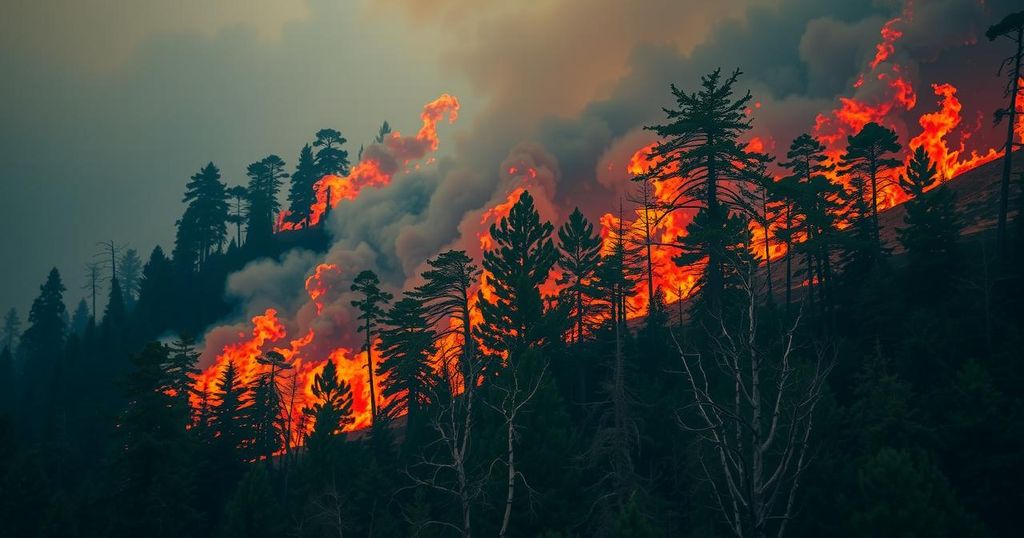The Increasing Threat of Climate Change: Enhanced Forest Fires and Public Health Risks

Climate change exacerbates forest fires, leading to greater environmental damage and health risks. A study showed that from 2003 to 2019, forest areas burned increased by 16% due to climate change, notably affecting regions like Australia and South America. A second study linked fire-related air pollution to a notable rise in deaths, affirming climate change’s role in worsening public health outcomes. While some regions see decreased fire-related deaths due to increased humidity, the overall trend highlights significant dangers posed by climate change on health and ecosystems.
Climate change significantly exacerbates the frequency and severity of forest fires, with detrimental effects on both the environment and public health. Increasing temperatures and prolonged droughts have contributed to an alarming increase in the burned areas, as demonstrated by a study published in the journal Nature Climate Change, which involved researchers from ETH Zurich. This study revealed that from 2003 to 2019, nearly 16% more forest land was scorched due to climate change compared to a scenario without it, particularly impacting regions such as Australia, South America, western North America, and Siberia. Although overall burned land decreased by 19% during this period, attributed to the conversion of forests into agricultural land, climate change has resulted in larger and more destructive fires where they do occur. Researchers assert that drier and warmer conditions created by climate change significantly enhance the impact of wildfires. A second study led by Chae Yeon Park of the Japanese National Institute for Industrial and Science Technology explored the health implications of these fires. It found that air pollution from fire-related smoke and fine particulate matter has caused a dramatic increase in deaths over the decades, rising from approximately 46,400 per year in the 1960s to around 98,750 in the 2010s. In the 2010s alone, more than 12,500 deaths annually were attributable to air pollution from fires ignited or intensified by climate change, a significant increase from around 670 in the 1960s. Particularly affected areas include South America, Australia, and Europe. The research underscores the pressing concern of climate change as a public health threat, especially as smoke encroaches on densely populated regions. However, the study notes that in certain areas, such as South Asia, increased humidity due to climate change has led to a decrease in fire-related deaths. The epidemiological study provides evidence of the correlation between fire-induced air pollution and health risks, emphasizing that while this reflects significant trends, it does not establish direct causal relationships.
The increasing intensity of forest fires is a direct consequence of climate change, leading to environmental degradation and a surge in health-related issues among populations exposed to smoke and particulate matter. The studies featured in notable academic journals have illuminated the worrying patterns of increased forest fire incidents correlated with changing climate conditions, as seen in various global regions. Understanding these relationships is essential for policymakers and public health officials to devise effective strategies to mitigate the adverse effects of climate change on both ecosystems and human health.
In summary, the impact of climate change on forest fires poses a dual threat to the environment and public health. Studies indicate that rising temperatures and droughts are increasing the severity and occurrence of wildfires, resulting in significant air pollution and subsequent health risks. As global warming continues to affect various regions, strategies to address and adapt to these changes must be prioritized to protect ecosystems and public health alike.
Original Source: www.swissinfo.ch






